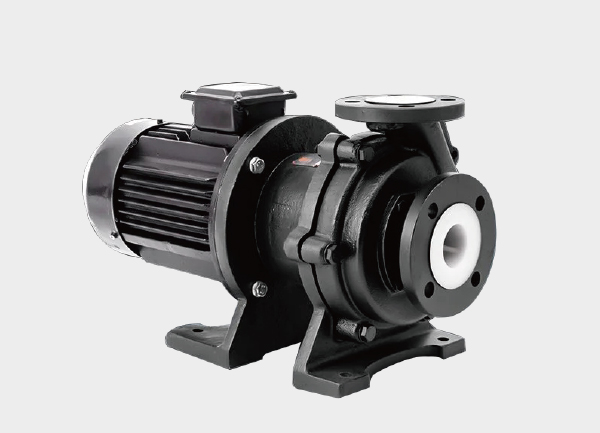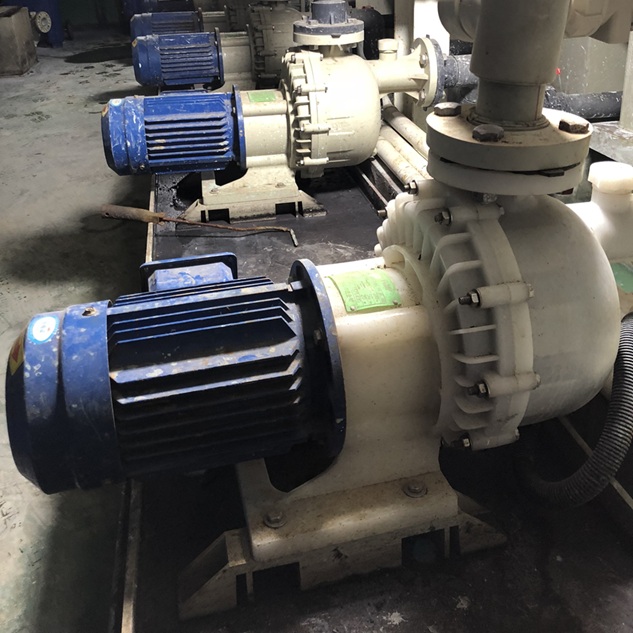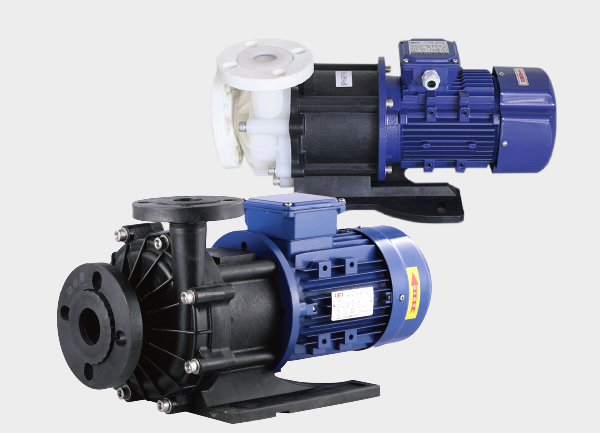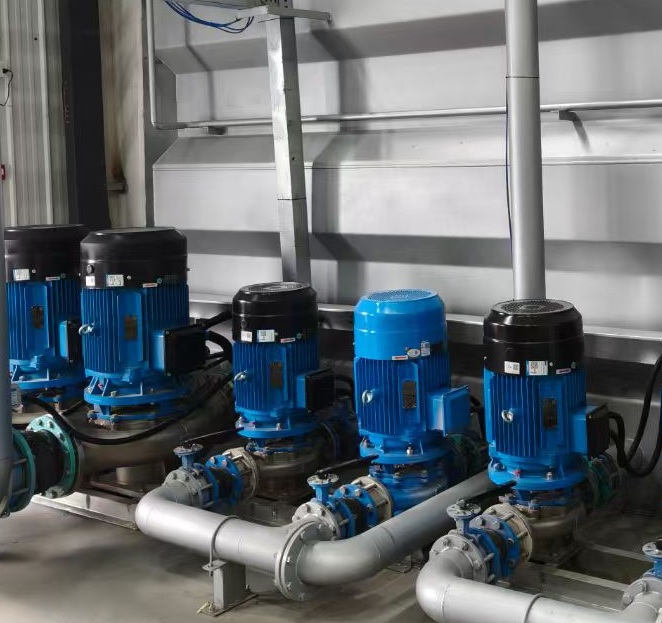A vertical submersible pump is a type of centrifugal pump in which the pump body is directly submerged in the liquid medium. The motor is located above the liquid surface, driving the impeller via a long shaft. This design offers compact structure, leakage prevention, and high adaptability. Below is a detailed overview covering structure, working principle, applications, performance features, and selection & maintenance guidelines.
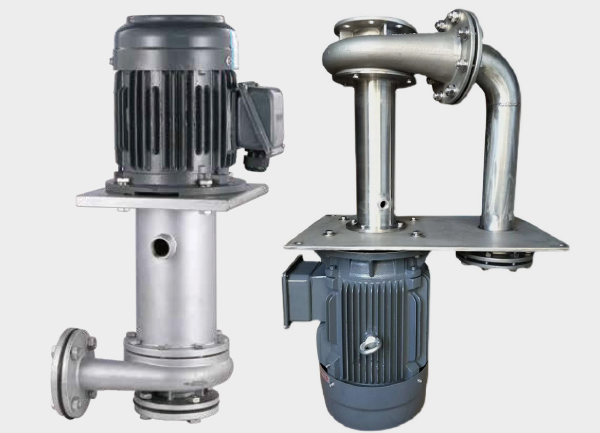
1. Structure and Working Principle
Core Components
Pump Body and Impeller:
Typically made of corrosion-resistant materials such as FRPP, CPVC, PVDF, stainless steel, or fluoroplastic alloys. Impellers can be either:
Closed type: Suitable for clean liquids.
Open type: Suitable for liquids containing solid particles or fibers.
Long Shaft and Bearings:
The long shaft connects the motor to the impeller. Its length is adjusted according to liquid depth (generally ≤ 3 meters). The bearing system usually includes:
Upper section: Double-row radial-thrust ball bearings.
Lower section: Wear-resistant sliding bearings.
Some high-end models feature axial force self-balancing systems to extend service life.
Sealing Design:
Seals can be dry shaft seals or mechanical seals. Certain models use magnetic drive technology, completely eliminating the risk of dynamic seal leakage, ideal for high-temperature or highly corrosive media such as molten salts.
Working Principle
The motor drives the impeller at high speed, generating centrifugal force that pushes the liquid from the impeller center toward the pump casing for discharge. Since the pump body is fully submerged:
No priming is needed.
Cavitation is effectively avoided.
2. Applications
Industrial Applications
Chemical and Electroplating: Handles corrosive media like strong acids, bases, and plating solutions. FRPP pumps are ideal for etching lines and wastewater treatment.
Petroleum and Energy: Used for transporting molten salts up to 565°C in concentrated solar power plants, or circulating heat carriers at 400°C in oil cracking units. Requires high-temperature seals and nickel-based impellers.
Wastewater Treatment: Processes sludge and heavy-metal-containing wastewater. Spiral impellers help reduce clogging, while stainless steel resists complex corrosion.
Municipal and Environmental
Urban drainage and rainwater collection.
Sludge transport and dewatering in municipal wastewater treatment plants.
Specialized Industries
Food and Pharmaceutical: Sanitary stainless steel construction compliant with GMP standards, suitable for beverages and medicinal liquids.
New Energy: Electrolyte transport in lithium battery production or handling corrosive media in hydrogen energy systems.
3. Performance Features
Advantages
Leak-free Operation: Magnetic or mechanical seals prevent hazardous fluid leaks.
Compact Structure: Can be installed directly in tanks or pits, saving space and construction cost.
Self-Priming: No water filling needed before startup, simplifying operations.
High Corrosion Resistance: Various materials can handle different chemical environments. Fluoroplastic alloys resist highly corrosive media such as aqua regia.
Limitations
Shaft Length Constraint: Typically ≤ 3 meters; deeper liquid levels may require multi-stage submersible pumps.
Complex Maintenance: Long shafts increase maintenance difficulty; bearings and impeller clogging require regular inspection.
Medium Restrictions: Not suitable for high-viscosity liquids or fluids with large solid particles without filtration.
4. Selection and Operation Guidelines
Key Parameters
Medium Properties: Temperature (-5°C to 105°C), viscosity, corrosiveness, and solid content. Molten salt pumps, for example, must withstand 565°C and resist chloride corrosion.
Flow Rate & Head: Choose based on operational requirements. Variable frequency drives (VFDs) allow 30%-120% of rated flow adjustment.
Material Compatibility: FRPP for general acids/bases, fluoroplastic alloys for strong corrosives, stainless steel for medium corrosive liquids.
Installation and Operation
Installation: Mount pump vertically; outlet piping should be independently supported to avoid weight load on the pump body. Verify correct motor rotation and check impeller clearance (1–2 mm) before startup.
Operation & Maintenance: Regularly clean impeller and filter to prevent blockage. Monitor bearing temperature and vibration (e.g., ≤ 2.8 mm/s for molten salt pumps). Drain liquid before long-term shutdown.
5. Technological Trends
Smart Upgrades: Integration of vibration, temperature, and leakage sensors, enabling IoT-based remote monitoring and early fault detection (accuracy 98.6%), reducing unplanned downtime by 75%.
Energy Efficiency: VFDs optimize flow, saving up to 17% energy. CFD-based hydraulic design improves pump efficiency beyond 84%.
Material Innovation: Advanced fluoroplastic and nickel-based alloys enhance corrosion and wear resistance. Molten salt impellers maintain low wear (0.03 mm/1,000 hours) even in 1.5% Cl⁻ solutions.
6. Typical Models and Specifications
Acid & Alkali Resistant Vertical Submersible Pumps (TD series):
Inlet/outlet 50–80 mm, power 1–10 HP, total head 14–37 m. Suitable for electroplating and wastewater treatment.Multi-Stage Submersible Pumps (DLY series):
Multi-stage segmented design, wide flow range, ideal for oilfield collection and pipeline transport. Efficiency > 80%.Fluoroplastic Alloy Submersible Pumps (FYS series):
Submersion depth 250–3000 mm, flow 1.5–400 m³/h, head 6–50 m, temperature -5°C~105°C. Suitable for highly corrosive media.
Conclusion
Vertical submersible pumps are essential in chemical, environmental, and energy sectors due to their leak-proof, self-priming, and corrosion-resistant properties. Proper selection should consider medium properties, operating conditions, and material compatibility, while leveraging smart and energy-efficient technologies. Regular inspection of seals, bearings, and impellers is key to extending pump service life and ensuring system reliability.



